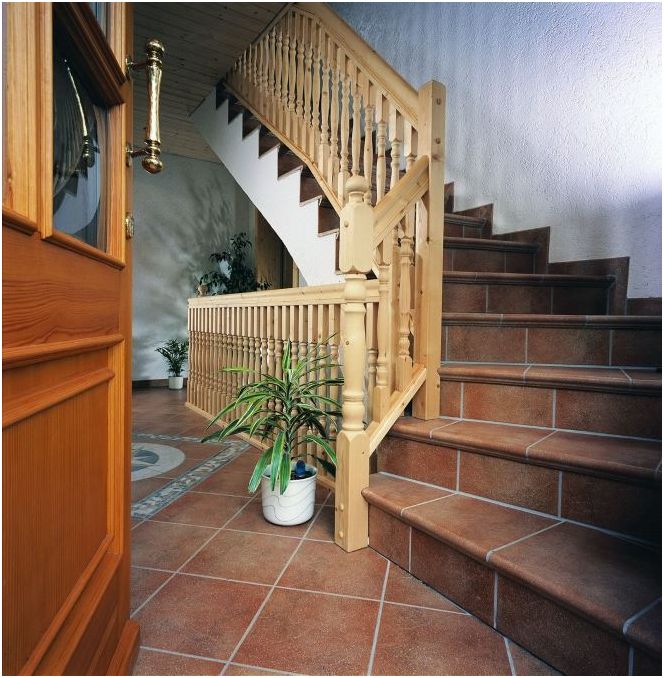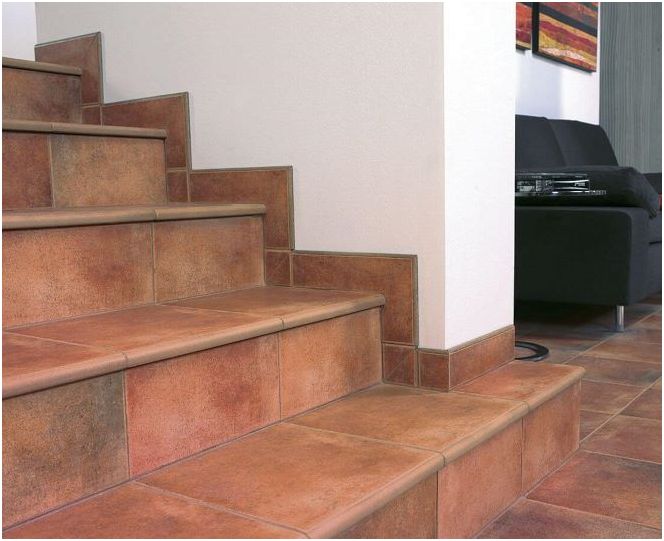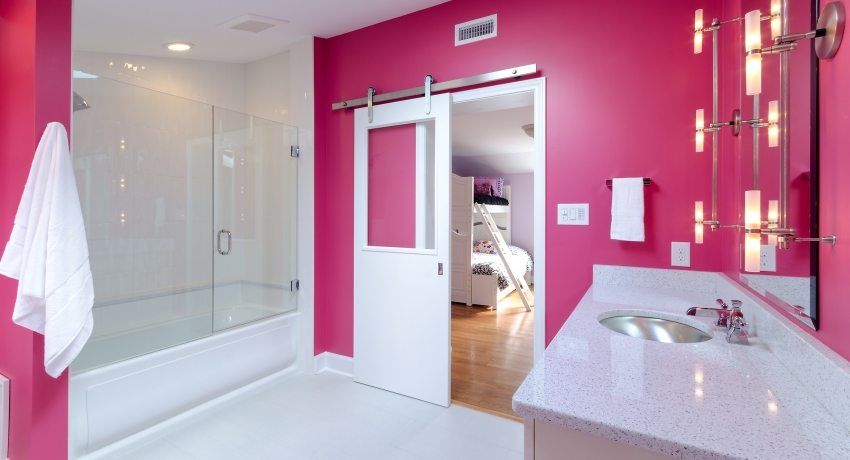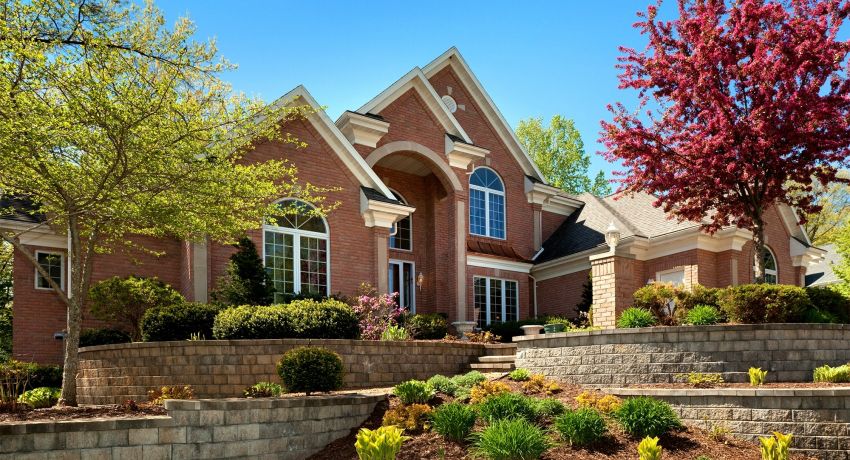Tile stairs are a great way to decorate reinforced concrete staircase structures in private homes. Find out which types of this building material are best suited for cladding, as well as what to consider when choosing tile products for external and internal stairs.
Tiling concrete stairs in your home is often the best solution, as opposed to cladding with wood or natural stone. Also, the tiled finishing option for staircase structures is the most affordable. At the same time, it becomes possible to create an effective interior design..
Tiled staircase in a private house – features

It can be covered with different materials: wood, natural stone, glass, paint, tile coverings. Ceramic tile products are used in the finishing of concrete structures inside and outside the structure. This is a much more affordable solution than wood cladding. They are also resistant to damage, temperature extremes, discoloration (it is recommended to use frost-resistant outdoor species).
Wood lovers can choose wood-like tile products that are both practical and aesthetic. Sometimes they look so realistic that it is difficult to recognize that this is just an imitation of a tree..
Internal cladding with tiles

For staircase structures inside the house, tile coatings made of porcelain stoneware, terracotta, clinker are suitable. Non-slip properties are important to avoid placing unsightly protective mats on the steps. Choose matte, grooved or embossed tile materials that are easier to walk on. Materials with a high degree of hardness and abrasion are best suited, which will make the cladding more durable..
You can use different colors or tile patterns for the steps, which will allow you to move away from the same type of solutions. It is also popular to decorate stair steps with tiles using elements that, in their shape or color, resonate with other decorative elements (for example, floors).
Outdoor tile staircase

Tile is a very good finishing material for outdoor staircase structures. Porcelain stoneware, clinker or terracotta tiles are perfect. When choosing a finishing material for outdoor structures, an important point is frost resistance. The external staircase must be resistant to low temperatures, therefore the tiled cladding must have a water absorption of not more than 3%, otherwise the material may crack during the first frost. Choosing anti-slip outdoor tiles is especially important for the safety of family members. These can be elements with a rough structure or with special grooves..
It is worth knowing that tile materials marked with symbols from B11 to B13 have the highest anti-slip degree. Outdoor staircase structures are usually used intensively, therefore, such staircase tiling must have exceptional hardness, resistance to abrasion, scratches and mechanical damage. Building materials of IV and V classes are characterized by a high degree of abrasion.
Installation features

If you plan to clad the stairs to the house, tiling will be the best option, but it is important to follow all the rules for laying. For installation, a special tile adhesive is used, which is mixed with water in the correct proportions. Before laying, the base must be carefully leveled, cleaned, degreased and dried. For good adhesion, it is recommended to prime the surface well.
When laying on an external staircase, remember that this can only be done in good weather conditions, i.e. when dry and the temperature is not lower than 5 degrees. The glue is applied both to the material and also to the base, and it is best to start the arrangement of individual elements from the upper steps and risers. If staircases are being finished with tiles in a private house, it is necessary to remember to maintain the correct slope, which will allow water to drain freely. After the glue hardens, which usually takes 1-2 days, the resulting joints should be filled with a solution of the appropriate color..

